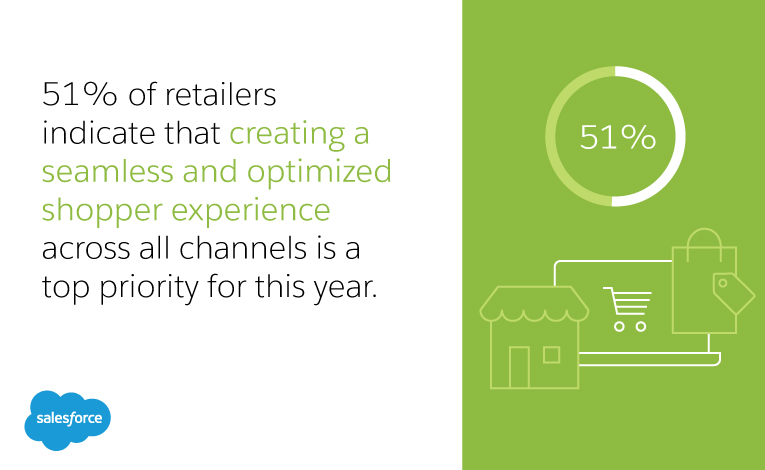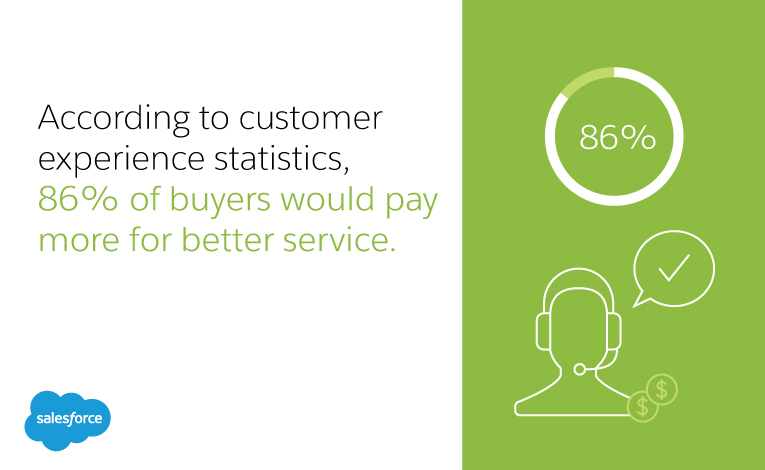The Retail Experience Will Always be an Experience Worth Improving for your Business

Retail has been around since ancient times, and it is a safe bet it will continue to be around for as long as humans are on the earth. However, retail in recent decades has looked very different from the past world of merchants trading goods in open-air markets. And now that we are in the throes of the digital age, the face of retail is changing at such a rapid pace that it is almost unrecognizable from the how it was just 10 years ago. In particular, the retail customer experience has been permanently altered by digital commerce.
Since the emergence of the internet, we have seen big companies experimenting with digital, and plenty of new companies positioning themselves as major players in the online retail landscape — even those companies that would not previously have been viewed as traditional retailers.
For the past few years, however, we have begun to see a further evolution, as more companies experiment with the blending of digital and physical channels. This is known as omni-channel — the concept that the customer experience will be seamlessly unified across every possible channel, whether online or brick-and-mortar. According to the Boston Retail Partners 2016 Customer Experience/Unified Commerce Survey, 51% of retailers indicate that creating a seamless and optimized shopper experience across all channels is a top priority for this year.

Technology allows for new creative ways to improve the retail experience.
There are many businesses that have already been taking advantage of new technology in creative ways to improve — and in some cases revolutionize — the retail experience. While most companies now offer some form of online store, there are some companies that have gone above and beyond in augmenting their customer experience with technology. Retailers and other businesses alike can learn from the creative ways that these companies approach innovation in the customer experience.
The first is the music streaming service Spotify. It is not an exaggeration to say that Spotify has transformed the modern music retail experience. When Spotify first emerged in 2008, it did not take long for it to catch on in a big way. By tapping into the emerging trend of consumers wanting to stream music rather than purchase individual songs, and providing a legal avenue to do so, Spotify was able to change the face of the music industry. They also became a multibillion-dollar company. While having a massively successful company is not exactly a problem, there is one unique concern: How do you maintain a personalized customer experience?
It is in this one-on-one customer experience where Spotify excels. Spotify has effectively used cloud tools to maintain the feeling of a startup, even as the company has grown into the biggest music streaming service in the world. Whether by offering quick solutions to unique problems or providing a streaming service with personalized recommendations and readymade playlists, Spotify makes its users feel they are getting an experience unlike any other.
When it comes to unified commerce, one company changing the game is Amazon. Although Amazon was originally conceived as an online-only retailer, the company raised eyebrows in 2014, when executives announced they would be opening their first brick-and-mortar store. Since then, more than a dozen brick-and-mortar Amazon stores, with different specialties, have opened across the country, and they are already successful examples of the aforementioned multichannel blend.
Finally, there is no more important feature of a gaming company than the customer experience. This is something that EA (Electronic Arts) understands, and the reason why they have been using immersive tech, interactive websites, and social channels to transform the way they engage with customers. This company’s business model no longer begins and ends with manufacturing games being sent to retailers to be sold. It has expanded to include interacting with customers at every level, across every channel, combining the physical and digital seamlessly to both sell its products and keep an open channel of communication with consumers. With help from the latest tech tools, EA has allowed the business to evolve, while still providing a rich, end-to-end customer experience.
See what retail tech can do for you.
These are great examples, but you might be wondering what retail tech can do for you specifically? The truth is, regardless of your industry or the size of your business, retail tech — and especially cloud CRM services — can provide a multitude of benefits. Among these, retail tech can provide:
- An increase in sales as high volumes are handled more efficiently, as well as more opportunities for upsell and cross-sell
- Increased engagement with customers and overall conversion
- Ability to grow in the right way and remain in control of that growth
- Connectivity — every aspect of your business accessible from one place
- Consistency across every platform, that is, an omni-channel approach
- The creation of an online community among your employees, as well as a forum for customers
- Improved overall return
These are just a few of the ways that businesses of any kind can benefit from the right technology and the right retail experience design. This invites the question: How do you find the right technology?
Find a retail industry software solution.
Finding the right software solution is half the battle toward crafting the best possible retail experience. Fortunately, there are four aspects to look for when shopping around:
CRM Tools
Before searching for the right shopper experience software, a business should be well aware of its specific needs. There are a few tools that are now universally sought in CRM solutions, such as cloud integration, order management, and point-of-sale software, but there are also more specialized tools that niche businesses may need to check.Ease of Integration
The right tools matter, but ultimately even the best tools are useless if they do not work on every platform. For this reason, full integration is an essential feature to look for when choosing a retail solution.Usability
The right CRM service will be used by every person in the company, from sales to customer service, and beyond. Platforms that require lots of training and practice are impractical and potentially money-wasting. The right solution should be usable for everybody, regardless of previous experience.Flexible Technology
As a business grows and changes, so will the various tasks that are required of its technology. The right software solution will ease the growth of a business, rather than hinder it. It should be flexible enough to deal with growth, rather than requiring upgrades or transfers to other systems.

Salesforce can offer this with a number of retail cloud solutions that will guarantee a connection with customers like never before. According to customer experience statistics, 86% of buyers would pay more for better service. Using these cloud solutions, you can achieve the kind of seamless retail experience that customers not only benefit from but have come to expect. Take a look at what your business could be benefiting from today, and kick off your better shopper experience tomorrow.

